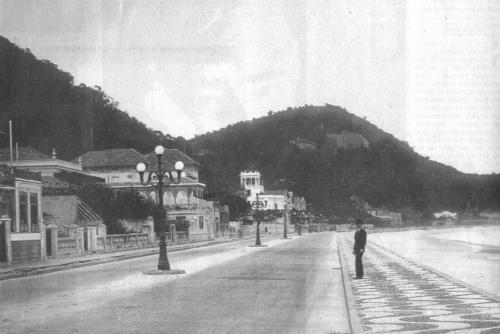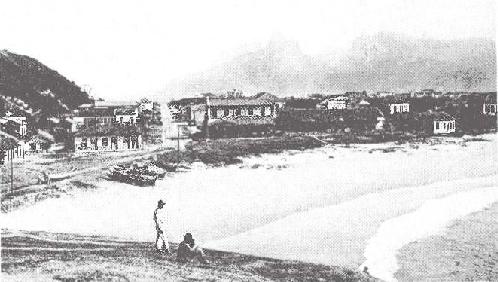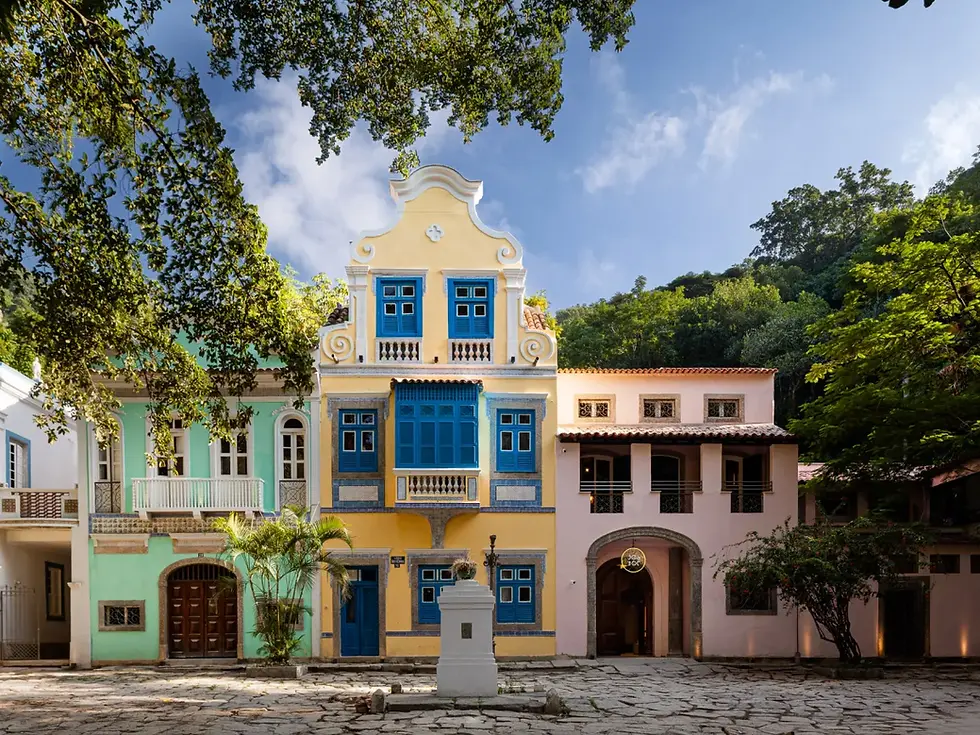Copacabana Beach
- Frederico Aversa Masson
- Oct 31, 2024
- 3 min read
Updated: Nov 4, 2024

The Copacabana Beach (Praia de Copacabana in Portuguese) is a beach located in the Copacabana neighborhood of the South Zone of Rio de Janeiro. One of the most famous beaches in the world, it is often referred to as "Princesinha do Mar" (Princess of the Sea), and is bounded by the Avenida Atlântica (Atlantic Avenue) and the Atlantic Ocean, with a total length of 4km.
In the early years of Brazil's colonization, the beach served as a landing point for Portuguese ships arriving in Rio de Janeiro. At that period, the beach (and the entire neighborhood) was known by a name in Tupi: "Sacopenapã," meaning "the sound and the flap of wings of the herons." It was only in the 18th century, due to the construction of a chapel dedicated for Our Lady of Copacabana at one end of the beach, that the beach (and the neighborhood) began to be called Copacabana. However, Rio de Janeiro's Copacabana is not the first place to bear this name. The original Copacabana is a city in Bolivia, located on the shores of Lake Titicaca. The city was already called Copacabana by the Incas who inhabited the region, and the name comes from an expression in an archaic Aymará dialect— "Kota kahuana," meaning "lake view."
During the 19th century, Copacabana Beach had very poor sanitary conditions (like most of Rio de Janeiro's beaches at the time) and was completely isolated from the central regions of the city. It is believed that, due to the stranding of two whales on the beach in August 1858, a group of notable members of Rio's high society — including Emperor Dom Pedro II — visited Copacabana. Despite the poor sanitary conditions and the difficult commute to the beach, the visitors enjoyed their time there.
In the final years of the 19th century, Copacabana got connected to the rest of the city with the construction of the Copacabana Tunnel (currently known as Alaor Prata Tunnel or Old Tunnel), and Copacabana officially became a neighborhood of Rio de Janeiro. With the construction of new tunnels and tram lines, as well as the development of a sanitation system at the turn of the century, Copacabana's original population of fishermen was gradually replaced by affluent communities, as mansions, a cabaret and even a cinema became elements of the neighborhood's landscape. In 1906, under Mayor Pereira Passos, the Avenida Atlântica was constructed, alongside Copacabana's famous sidewalk. The sidewalk - a Portuguese pavement - features a wave-like layout, paying tribute to the city's Portuguese heritage. During this period, sea bathing became a popular leisure activity for high-income citizens, and Copacabana emerged as a sought-after spot for swimming.
From 1908 to 1914, the Our Lady of Copacabana chapel was demolished, being replaced by the Copacabana Fort. On July 5, 1922, the Copacabana Fort revolt took place, in which rebel factions of the Brazilian Army attempted an insurrection against President Epitácio Pessoa and President-elect Artur Bernardes, taking control of the Copacabana Fort. This event reflected the dissatisfaction of many groups with the oligarchy regime that ruled Brazil at the time. Due to poor planing, the revolt was quickly suppressed by legalist forces, and the rebels were arrested.
On August 13, 1923, the luxurious Copacabana Palace Hotel was inaugurated at Copacabana Beach. Designed by architect Joseph Gire — who drew inspiration from the beach hotels of the French Riviera — it quickly became a symbol of Rio de Janeiro's glamour and solidified Copacabana as a hub for the city's high-society. Along with the Copacabana Palace and the rise of Art Deco's popularity in Rio, many buildings in that style were built along Copacabana's shoreline. The beach became a popular destination for visitors from around the world, with the Copacabana Palace hosting many notable guests, including Walt Disney and Brigitte Bardot.
During the 1970s, Copacabana's sidewalk and the Avenida Atlântica underwent renovations. The avenue and the beach's strip of sand were widened, and the sidewalk was redesigned by architect Roberto Burle Marx, preserving the iconic layout, but changing the direction of the waves. Improvements were also made to the sanitation and sewage systems during this renovation. Since then, additional projects have been undertaken along Copacabana's shoreline, such as the construction of a bike lane and kiosks (the "quiosques").
Copacabana Beach remains one of the most famous sites in Brazil and a popular destination for cariocas and tourists from around the world. The beach serves as the venue of many events, including concerts and sports.
Sources & References
Copacabana.com. (n.d.). História de Copacabana. Retrieved from https://copacabana.com/historia-de-copacabana
BBC News Brasil. (2020, June 25). Copacabana: a praia mais famosa do Brasil e seu charme inconfundível. Retrieved from https://www.bbc.com/portuguese/articles/cz4dv7py313o
Wikipedia. (2023, October 1). Praia de Copacabana. Retrieved from https://pt.wikipedia.org/wiki/Praia_de_Copacabana
Images Credits
Image 1: Blog Tourb. Retrieved from https://www.tempo.com/noticias/actualidade/conheca-as-10-cidades-mais-bonitas-do-brasil-segundo-o-chatgpt.html
Image 2: Retrieved from https://copacabana.com/historia-de-copacabana/
Image 3: Retrieved from https://copacabana.com/historia-de-copacabana
Image 4: Romulo Fialdini. Retrieved from https://www.booking.com/hotel/br/copacabana-palace.pt-br.html









Comments